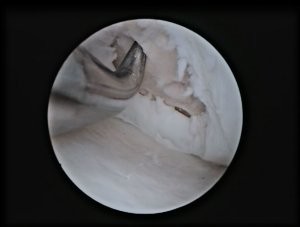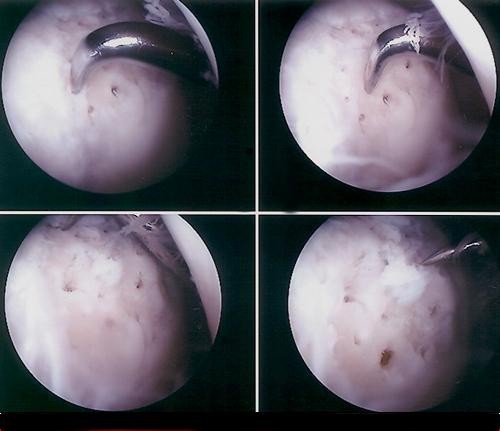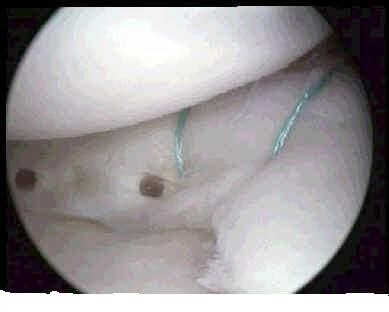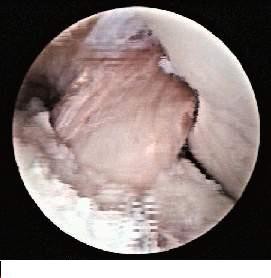Knee Arthroscopy allows an Orthopaedic Surgeon to diagnose and treat Knee
injuries by viewing "the inside of the Knee" through small incisions using a pencil-sized
instrument called an Arthroscope. The Knee is filled with fluid and the scope transmits an image
of the Knee through a camera to a television monitor. During Knee Arthroscopy Surgery,
additional small incisions are created to allow insertion of other small instruments to remove
or repair damaged tissues. Most Arthroscopic Knee Procedures are done on outpatient basis.
Recovery is typically much quicker and easier than traditional open Knee Procedures.
With improvements of arthroscopes and higher resolution cameras, the procedure has become highly
effective for both, accurate diagnosis as well as proper treatment of Knee problems.
Knee Arthroscopy is used in performing a wide range of different types of surgical procedures in
the Knee Joint including: confirming a diagnosis, removing loose bodies, removing or repairing a
torn meniscus, reconstructing torn ligaments, repairing articular cartilage and fixing fractures
of the joint surface.
There are various types of Knee Prosthesis and the choice of the appropriate one is based on the
condition of the Knee, Age and Lifestyle of the patient.

Knee cartilage damage
Cartilage damage in younger people need to be evaluated and treated. This can be done by way of
MRI and arthroscopic assessment. If required, arthroscopic treatment is offered to try and grow
new cartilage or replace cartilage.
Arthroscopy view of knee showing damage to cartilage (cartilage defect)

Arthroscopy view showing microfracture treatment of punching holes in the cartilage defect to stimulate blood supply and new cartilage formation

Meniscus tears A torn painful meniscus in the knee requires arthroscopy to either trim the torn bit or to repair the tear. The tear is assessed carefully and repaired if it is repairable and in the zone of the meniscus where blood supply is available for the tear to heal. Arthroscopy view showing torn knee meniscus

Anterior Cruciate ligament (ACL) injuries
Patients with a torn ACL often complain of loss of balance, buckling, instability, difficulty
running or trekking. This warrants surgery in such younger people by way of arthroscopy and ACL
reconstruction.
Arthroscopy view of torn ACL

Arthroscopy view after repair of torn meniscus

Arthroscopy view after ACL reconstruction surgery
Dr Ameet Pispati offers the latest ligament reconstruction and cartilage repair techniques for his patients.